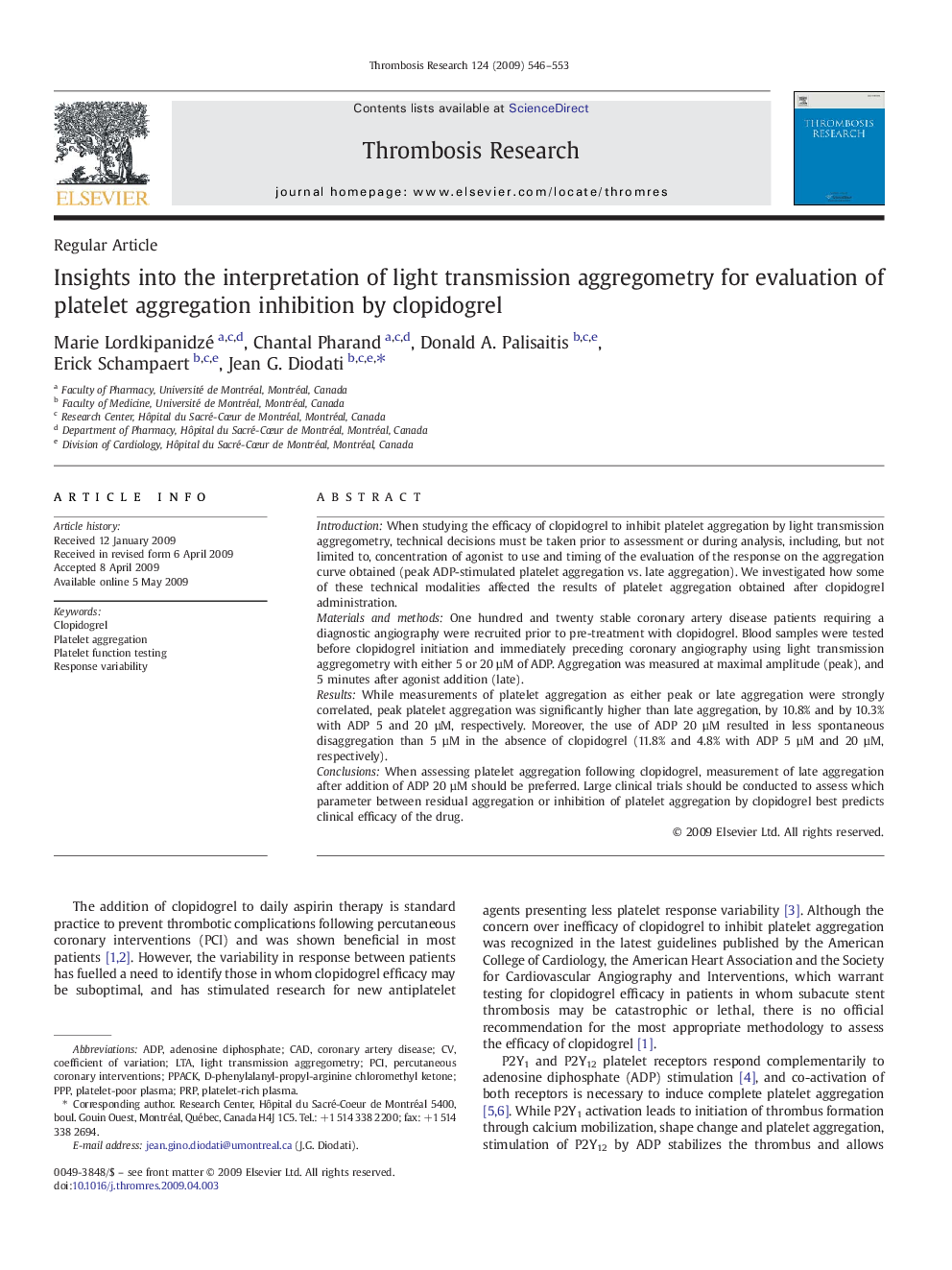| Article ID | Journal | Published Year | Pages | File Type |
|---|---|---|---|---|
| 3029506 | Thrombosis Research | 2009 | 8 Pages |
IntroductionWhen studying the efficacy of clopidogrel to inhibit platelet aggregation by light transmission aggregometry, technical decisions must be taken prior to assessment or during analysis, including, but not limited to, concentration of agonist to use and timing of the evaluation of the response on the aggregation curve obtained (peak ADP-stimulated platelet aggregation vs. late aggregation). We investigated how some of these technical modalities affected the results of platelet aggregation obtained after clopidogrel administration.Materials and methodsOne hundred and twenty stable coronary artery disease patients requiring a diagnostic angiography were recruited prior to pre-treatment with clopidogrel. Blood samples were tested before clopidogrel initiation and immediately preceding coronary angiography using light transmission aggregometry with either 5 or 20 µM of ADP. Aggregation was measured at maximal amplitude (peak), and 5 minutes after agonist addition (late).ResultsWhile measurements of platelet aggregation as either peak or late aggregation were strongly correlated, peak platelet aggregation was significantly higher than late aggregation, by 10.8% and by 10.3% with ADP 5 and 20 µM, respectively. Moreover, the use of ADP 20 µM resulted in less spontaneous disaggregation than 5 µM in the absence of clopidogrel (11.8% and 4.8% with ADP 5 µM and 20 µM, respectively).ConclusionsWhen assessing platelet aggregation following clopidogrel, measurement of late aggregation after addition of ADP 20 µM should be preferred. Large clinical trials should be conducted to assess which parameter between residual aggregation or inhibition of platelet aggregation by clopidogrel best predicts clinical efficacy of the drug.
